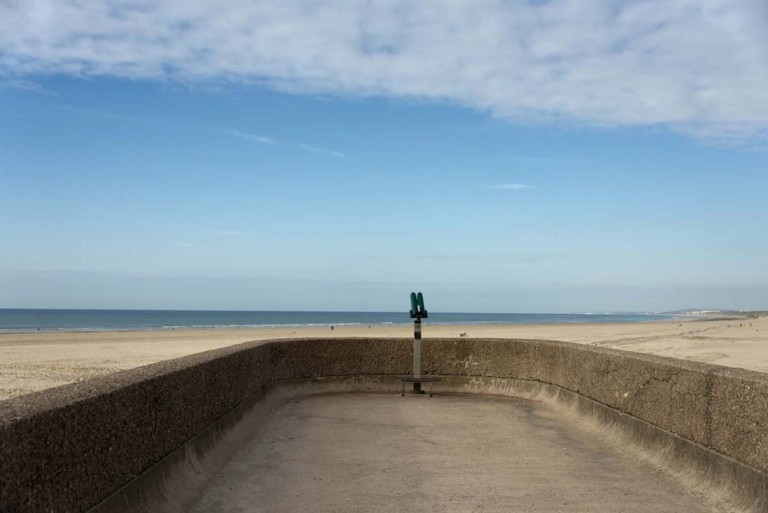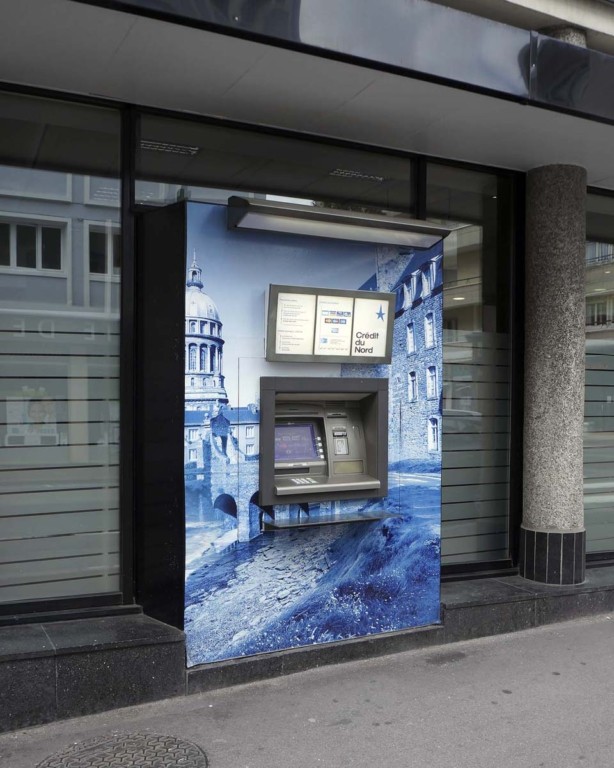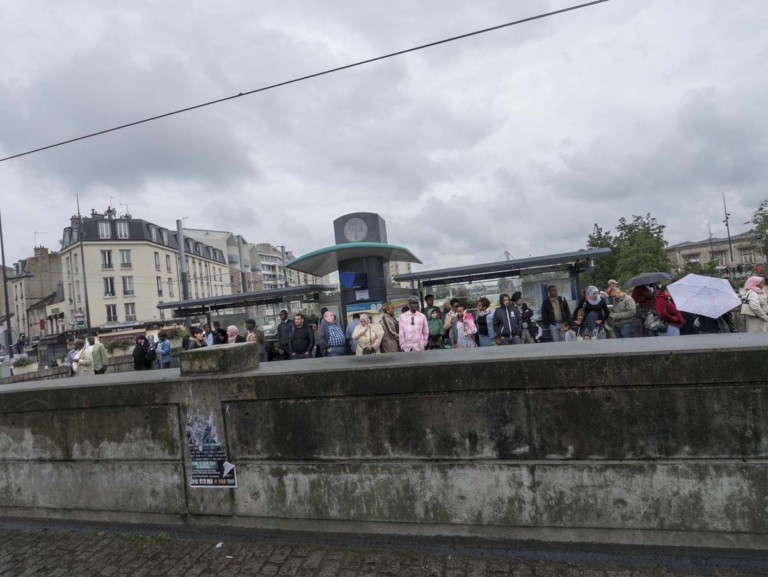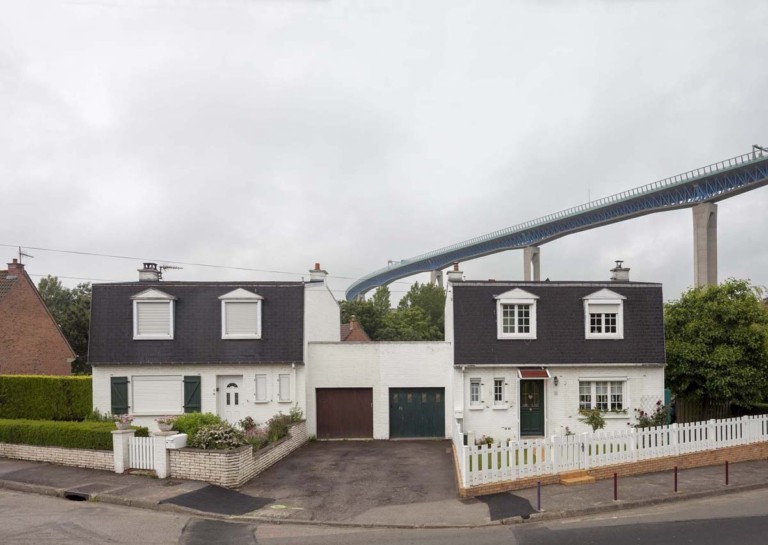Theo Baart & Cary Markerink
After Baldus: Travels in a Wounded Landscape
10 Dec 2016 - 05 Mar 2017
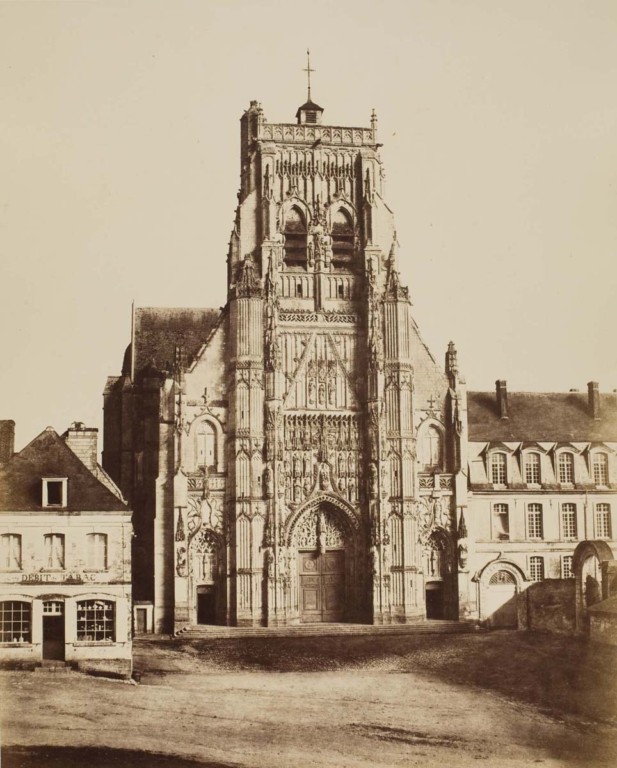
Édouard Baldus, Saint-Riquier (Chemin de Fer du Nord, 1855), Courtesy George Eastman Museum, Rochester NY
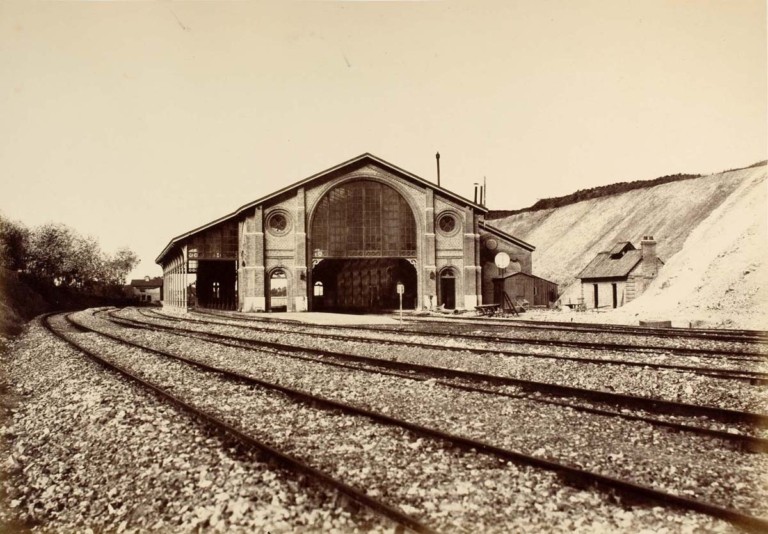
Édouard Baldus, Gare de Longueau (Chemin de Fer du Nord, 1855), Courtesy George Eastman Museum, Rochester NY

Édouard Baldus, Église d'Auvers (Chemin de Fer du Nord, 1855), Courtesy George Eastman Museum, Rochester NY
THEO BAART & CARY MARKERINK
After Baldus: Travels in a Wounded Landscape
10 December 2016 - 5 March 2017
Inspired by the beautiful 19th-century photo album Le Chemin de Fer du Nord, Theo Baart and Cary Markerink – acclaimed for documentary photo projects such as Nagele and Snelweg – retraced the footsteps of the photographer Édouard Baldus (1813–1889), turning their camera towards the man-made landscape of northern France. In their series After Baldus they document, in colour, the changes that this region has experienced over the last 150 years as the result of industrialization, urbanization, globalization and several wars. For 50 of the resulting photographs they made prints for their own album, whose format and design is identical to Baldus’ original.
The seed for the photographic project After Baldus was first sown in 2009, when Baart and Markerink were given an opportunity to study Baldus’ album in the depot of the George Eastman House in Rochester, New York. The French photographer Baldus had produced Chemin de Fer du Nord. Ligne de Paris à Boulogne. Vues Photographiques in 1855 at the request of Baron James de Rothschild, a wealthy banker and the financier of the brand-new railway of the title. The occasion was a state visit to France by the British Queen Victoria; the 50 photographs were taken along the route that she would travel by train, from the harbour town of Boulogne-sur-Mer to Paris. The luxuriously produced, leather-bound, large-format photo album was given to her as a souvenir. In monumental style, this album displays the technical genius of French industry: not just of the railway and its adjacent infrastructure, but also that of photography itself, a new invention at the time. Four years later another 25 albums were made, with a slightly different collection of photographs, this time intended for a variety of dignitaries. The copy in the collection of the present George Eastman Museum is one of these, and it formed the starting point for Baart and Markerink’s series After Baldus, in which they retraced the French photographer’s footsteps.
In collaboration with the cultural historian Alison Nordström (then curator at the George Eastman House) Baart and Markerink began to investigate the (photographic) history of the built landscape between Boulogne-sur-Mer and Paris. Their photographs are by no means a shot-for-shot replica of Baldus’ work, but document in a similar way the state of the man-made landscape along the same track in the 21st century. Where Baldus’ world stood on the threshold of industrialisation, that of Baart and Markerink has had to deal not just with industrialisation but also with urbanization, globalization, and several wars.
Museums generally forbid visitors to touch anything, but Huis Marseille is offering a unique opportunity to leaf through Baart and Markerink’s large-format album and its 50 colour photographs with your own (gloved!) hands. This physical aspect of the act of looking is, after all, inherent to the medium. Baldus’ antique album itself, with its 50 albumen prints, is too rare and fragile to be treated in this way, but in the exhibition video a curator of the George Eastman Museum leafs through it, a page at a time, in the safe surroundings of the museum depot.
Theo Baart (1957) and Cary Markerink (1951) both studied photography at the Gerrit Rietveld Academy in Amsterdam, and since 1987 have regularly embarked on joint photographic projects. A recurrent theme in their oeuvre is the man-made landscape: the environment as shaped by people and machines. The photo book is an important vehicle for these photographers, as it enables them to show their work, which has a documentary character, in a coherent context. They publish their own books through their foundation Ideas on Paper. Individual projects by Baart and Markerink include Werklust, biografie van een gebruikslandschap (Baart, 2015) and Memory Traces (Markerink, 2009). Ideas on Paper intend to publish a photo book entitled After Baldus: Travels in a Wounded Landscape, with an essay of the same title by Alison Nordström, in 2017.
After Baldus: Travels in a Wounded Landscape
10 December 2016 - 5 March 2017
Inspired by the beautiful 19th-century photo album Le Chemin de Fer du Nord, Theo Baart and Cary Markerink – acclaimed for documentary photo projects such as Nagele and Snelweg – retraced the footsteps of the photographer Édouard Baldus (1813–1889), turning their camera towards the man-made landscape of northern France. In their series After Baldus they document, in colour, the changes that this region has experienced over the last 150 years as the result of industrialization, urbanization, globalization and several wars. For 50 of the resulting photographs they made prints for their own album, whose format and design is identical to Baldus’ original.
The seed for the photographic project After Baldus was first sown in 2009, when Baart and Markerink were given an opportunity to study Baldus’ album in the depot of the George Eastman House in Rochester, New York. The French photographer Baldus had produced Chemin de Fer du Nord. Ligne de Paris à Boulogne. Vues Photographiques in 1855 at the request of Baron James de Rothschild, a wealthy banker and the financier of the brand-new railway of the title. The occasion was a state visit to France by the British Queen Victoria; the 50 photographs were taken along the route that she would travel by train, from the harbour town of Boulogne-sur-Mer to Paris. The luxuriously produced, leather-bound, large-format photo album was given to her as a souvenir. In monumental style, this album displays the technical genius of French industry: not just of the railway and its adjacent infrastructure, but also that of photography itself, a new invention at the time. Four years later another 25 albums were made, with a slightly different collection of photographs, this time intended for a variety of dignitaries. The copy in the collection of the present George Eastman Museum is one of these, and it formed the starting point for Baart and Markerink’s series After Baldus, in which they retraced the French photographer’s footsteps.
In collaboration with the cultural historian Alison Nordström (then curator at the George Eastman House) Baart and Markerink began to investigate the (photographic) history of the built landscape between Boulogne-sur-Mer and Paris. Their photographs are by no means a shot-for-shot replica of Baldus’ work, but document in a similar way the state of the man-made landscape along the same track in the 21st century. Where Baldus’ world stood on the threshold of industrialisation, that of Baart and Markerink has had to deal not just with industrialisation but also with urbanization, globalization, and several wars.
Museums generally forbid visitors to touch anything, but Huis Marseille is offering a unique opportunity to leaf through Baart and Markerink’s large-format album and its 50 colour photographs with your own (gloved!) hands. This physical aspect of the act of looking is, after all, inherent to the medium. Baldus’ antique album itself, with its 50 albumen prints, is too rare and fragile to be treated in this way, but in the exhibition video a curator of the George Eastman Museum leafs through it, a page at a time, in the safe surroundings of the museum depot.
Theo Baart (1957) and Cary Markerink (1951) both studied photography at the Gerrit Rietveld Academy in Amsterdam, and since 1987 have regularly embarked on joint photographic projects. A recurrent theme in their oeuvre is the man-made landscape: the environment as shaped by people and machines. The photo book is an important vehicle for these photographers, as it enables them to show their work, which has a documentary character, in a coherent context. They publish their own books through their foundation Ideas on Paper. Individual projects by Baart and Markerink include Werklust, biografie van een gebruikslandschap (Baart, 2015) and Memory Traces (Markerink, 2009). Ideas on Paper intend to publish a photo book entitled After Baldus: Travels in a Wounded Landscape, with an essay of the same title by Alison Nordström, in 2017.

